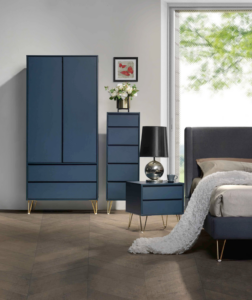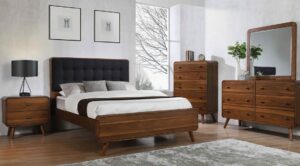A Good News/Bad News Story
Retailers are facing a good news/bad news situation as we head further into the fourth quarter. Let’s get into the good news first—and there is a lot of it!
Consumer demand for furniture is high. According to Furniture Today, new orders continued to soar in July, increasing 39% over the same month last year, following a 30% increase reported in June.
Add to that the fact that consumer confidence is at its highest since the pandemic hit in March, according to the Wall Street Journal. Retail analysists are predicting a potentially strong holiday season with consumers at the reigns of $1 trillion in spending power.
Furniture sales are up for a few reasons. People are spending more time at home due to the pandemic, and they’re turning their attention to renovations and redecorating. Or they’re moving. Housing starts are up and, as of August 2020, have reached their highest level since June 2007, according to the Wall Street Journal. Home purchases tend to prompt furniture sales.
Online sales are also up with a growth rate nine times that of 2019. It’s not surprising; eCommerce is the only channel that has consistently been open during the pandemic. And with COVID restrictions on occupancy and shoppers still leery to enter stores, a larger portion of the buying decision is made online, from deciding which store to visit to completing the transaction when they return home.
The Challenge
While these trends are great for retailers, they could create some bad news, too. Supply is tight, leading to stock-outs. Furniture Today reports that backlogs rose 69% over July 2019 levels and inventories fell, too, down 10% compared to July 2019. As a result, consumers are waiting longer to get their orders. ABC News reports that deliveries are taking months instead of the typical six to eight weeks.
Consumers who are stuck at home want their goods now. As a result, many retailers are concerned that low inventories and slow product back order delivery schedules could prompt cancellations.
As a furniture store owner, there is something you can do.
Accentuate the Positive
Stock-outs are running close to 40% instead of the normal 10%-25%. That means 60% is in stock. Direct shoppers toward those products. Sounds simple, but with thousands of products, how do you efficiently keep up with the ever-changing stock situation and not make the shopper hunt for a replacement or leave from exhaustion?
Shoptelligence’s Dynamic Curation is the solution. The tool uses the platform’s proprietary product enrichment to automatically identify similar products and guide shoppers to viable alternatives that fit their needs and that is available now. Shoppers find the product they like then are automatically served with similar items from the retailer’s catalog by attribute.
It’s like a personal concierge: “Looking for something like this with the same style? Same price point? Same color? No problem. Here are your choices.”






